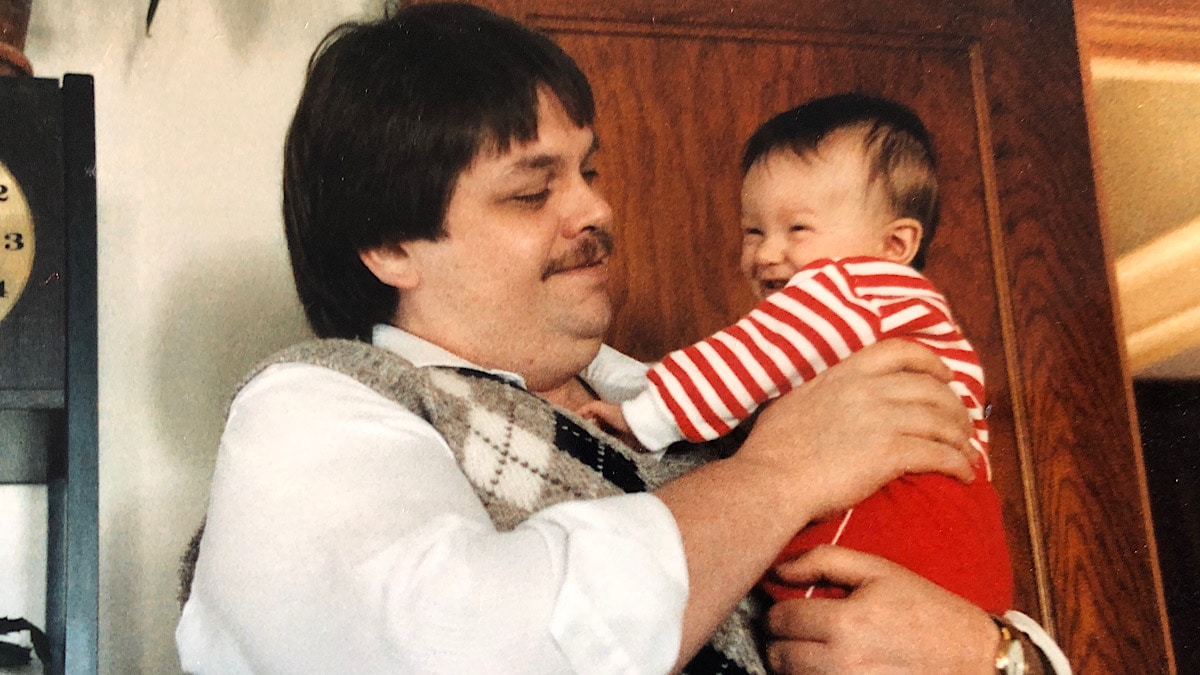Excerpt: Dealing with challenging students can be, well, challenging. Read our 3 steps and learn how to deal with challenging students – proactively.
Introduction: We Need to Break the Cycle
You don’t build somebody up by tearing them down. You can’t possibly make somebody feel good about themselves by pointing out all of what they’re doing wrong. Confidence is a key ingredient in bringing out the best in a person. Without confidence, people become reserved, hesitant, self-concealing, self-conscious, easily manipulated, and can act out in unpredictable ways (to others and themselves).
And confidence is not built in anger, frustration, or contempt. When boiled down, confidence is success remembered. Confidence is what manifests inside of a person when they see that their actions are producing a successful series of results that they, more and more, feel like they will be able to produce successfully again in the future.
Imagine how frustrating it might be for a person who doesn’t get things right on the first try (or second or third) to not only deal with their own frustrations and insecurities, but to have their “role models” point out everything that they did wrong, get emotionally responsive at their failed attempts, and proceed—day-in and day-out—to perpetuate that cycle in the form of a negative feedback-loop? Being, they do something wrong, their “role model” points it out and gets emotional, they get upset, they feel worse, they act worse (because they feel worse), their “role model” points out the wrong behavior again, everybody gets more upset, and so on.
This especially applies to kids who, for the most part, aren’t even self-aware enough to know what the emotions they’re feeling even mean or how they’re supposed to be properly dealt with them. This is a cycle that needs to be addressed and deeply reevaluated.
So how do we break this cycle? Well, it’s hard to prescribe a universal answer for what should be recognized as very individual situations. But there’s a formula that I can certainly recommend that was presented to me by author, Dave Kovar that has helped me out tremendously when working with students who present challenging situations and behaviors.
One of the most important properties in this approach is that it is proactive rather than reactive. Meaning, this strategy is something that you can (and should) deploy before any challenging situations or behaviors arise. This is the strategy that you use when there’s a person that you work with on a regular basis who regularly displays challenging/ confrontational/ defiant behavior or when there’s a student who you suspect might display this type of behavior (based on actions you see or hear about leading up to your first encounter).
Take a look at the 3 steps below and spend some time thinking about how they might be applied to some of the situations in your life. We hope they find you well.
NEW In The Shop: Don’t Let The Tame Ones Tell You How To Live [Poster]
Why We ♥ It: Some of the best advice I (Matt here) ever got was: don’t take life advice from people who aren’t living a life you want to live and don’t take criticism from people you wouldn’t go to for advice. I created this poster to act as a reminder to listen more closely to our role models and less closely to our critics, trolls, and tamed-comfort-zone-hugger acquaintances. It’s also a perfect gift for the outdoor adventurer, travel enthusiast, or solo explorer (or soon to be). Available in print or digital download. 👇🏼
...Want to advertise your book, product, or service? Send inquiries to matt@movemequotes.com.
The List: How to Deal with Challenging Students – Proactively and In 3 Steps
1) Build Rapport — People listen to people they like. Of course they do. So do you! You’re much more likely to listen to somebody who you connect with than somebody you don’t. Think about how you feel when somebody you don’t have a connection with tells you what to do/ how to act/ and puts you down? If you’re anything like me, then you probably feel like being defiant!
But when somebody you have a connection with asks you to do something, asks you to change your behavior, or shows you what you did wrong that can be improved—it elicits a much different response. So how do you build rapport?
First, mentally prepare for the meeting with the person and get emotionally centered for the interaction. You have to be in a place where their behavior won’t draw an emotional response from you and you have to teach yourself to stay focused on the following tips: Smile when you see them (frowning and rolling your eyes will immediately diminish your ability to build rapport); Get excited to see them (even if you’re not on the inside); Say ‘Hi” first (don’t wait for them to initiate conversation or action—YOU be the initiator); Ask interesting questions (steer the conversation towards the positive and genuinely try to get to know them—this is where you’re going to have to apply your individual touch); And, of course, treat them the way you want to be treated (even if they’re kids—don’t treat them or act in a way towards them that you wouldn’t want your boss to act towards you).
This is one of the most CRUCIAL steps in the whole process. Without this step of building rapport, EVERYTHING else becomes exponentially more difficult. Building rapport doesn’t have to be a 20 minute long process, either. Rapport is something that is built in little, 2-3 minute interactions over the course of many, many interactions. One day at a time, one interaction at a time, just keep building.
2) Set Clear Expectations — Once you’ve built rapport, let them know exactly what you’d like them to do. This, also, will require some personal touch. The expectations you set for the person needs to be appropriate given their situation and circumstance.
If, for example, a student of yours is having a really hard time raising their hand before speaking what’s on their mind, you might set for them the expectation of raising their hand—and focus exclusively on that. You might say to them (after your rapport building conversation) that during class, whenever they want to say something, that you want them to raise their hand and that you want them to try their hardest not to forget to raise their hand. This is a clear expectation that isn’t open to interpretation.
What you want to avoid doing is telling a student who is demonstrating challenging behaviors to: Sit up straight the entire class, not to talk, not to forget to raise their hand, not to look away from the board, not to fidget in their seat, etc. Yes, it’s clear, but it might be WAY too much for the student to handle. Treat each situation individually and set clear, appropriate expectations—not perfectionist expectations. Then, the last step is where the magic starts to happen…
3) Catch Them Doing Something Right — This can be ANYTHING and for any reason that you can possibly find (and you might have to look really hard in some situations). Praise them for something that they’re doing that’s GOOD and do this as proactively and early on into the encounter as you can.
Maybe they sat down politely in their seat; maybe they didn’t poke other kids; maybe they raised their hand; maybe they said something nice; maybe they didn’t fall over? What it is exactly is irrelevant, what matters is that you find something. THIS is where you disrupt the negative feedback loop (mentioned above) and start the positive feedback loop.
You catch them doing something right, you praise them publicly, they feel good, they like the attention, they want to get it again, they do something else good, it elicits another successful response, confidence slowly builds in their ability to replicate this positive type of response, they act better, it happens again, and so on. I have seen the magic of this cycle literally CHANGE lives. It can be wildly refreshing for a person who has been constantly torn down their whole life to hear about what they’re doing that’s… Correct? Good? Positive? Noteworthy? And you might be surprised at how receptive a “challenging” student might be to this type of approach (when done genuinely and correctly).
I have seen kids go from getting suspended from school every day, to being the “all-stars” of their martial arts class. It works. Of course, it’s not guaranteed, as some situations might elicit special measures and a special approach, but it certainly beats the alternative of tearing them down and pointing out all of their flaws and mistakes.
Afterword
One last question you might be asking yourself is, “What if the interaction is already to the point of confrontation or bad behavior?” This is when you might use a strategy that was outlined in Humble the Poet’s Book, Things No One Else Can Teach Us, about separating their actions from their identity. You can read more about that idea here. And again, depending on the severity of the situation, you would then have to take the appropriate (and clearly explained ahead of time) disciplinary measures that are the consequence of the bad behavior.
Without clearly defined rules or disciplinary procedures, students might find “weak spots” or “loop holes” in their situations. Kids will push boundaries and they will challenge authority—it’s how they learn about the boundaries of their environment. With proper (and consistent) disciplinary measures, students will be much less likely (as long as they can help it) to repeat the negative behavior or continue challenging their “role models” moving forward—the boundaries of their environment will have been clearly defined.
But if the disciplinary measures are always arbitrary and seemingly impulsive or random? Or if different “role models” handle situations differently? Then they will continue to explore and push buttons until the boundaries have been discovered (or they can see just how much they can get away with). It’s up to us, as the role models showing them the way, to show them the way as best we can. And, as is the case with many things in life, the best way is usually the more challenging way. Yelling is the instinctual, easy option. Having the conversation and taking all of the preventative, proactive measures is hard. Accept the challenge. Be better. And so will they.
Read Next:
NEW In The Shop: Don’t Let The Tame Ones Tell You How To Live [Poster]
Why We ♥ It: Some of the best advice I (Matt here) ever got was: don’t take life advice from people who aren’t living a life you want to live and don’t take criticism from people you wouldn’t go to for advice. I created this poster to act as a reminder to listen more closely to our role models and less closely to our critics, trolls, and tamed-comfort-zone-hugger acquaintances. It’s also a perfect gift for the outdoor adventurer, travel enthusiast, or solo explorer (or soon to be). Available in print or digital download. 👇🏼
...Want to advertise your book, product, or service? Send inquiries to matt@movemequotes.com.

Written by Matt Hogan
Founder of MoveMe Quotes. On a mission to help busy people do inner work—for better mental health; for healing; for personal growth. Find me on Twitter / IG / Medium. I also share daily insights here. 🌱
It has taken me 1,000’s of hours to build this free library for you. If it has helped you, you can support my continued effort here. ☕️


![To My Daughter. [Excerpt]](https://movemequotes.com/wp-content/uploads/2023/06/Daughter.jpeg)



